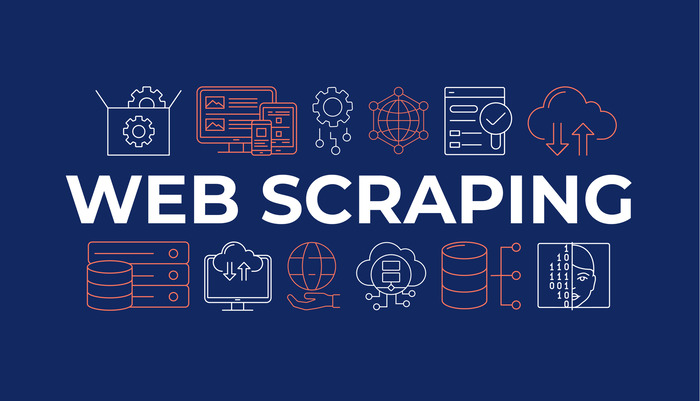Current State of Web Scraping
Web scraping remains an essential tool for businesses, researchers, and developers who rely on automated data extraction to fuel analytics, machine learning models, and competitive intelligence. However, the industry is undergoing a significant shift due to increasingly sophisticated anti-bot mechanisms and evolving privacy regulations.
According to Gartner, the anti-bot market is projected to grow from $2.5 billion in 2023 to $4.1 billion by 2025, with organizations investing heavily in detection technologies to combat scraping. Modern websites employ dynamic rendering, browser fingerprinting, and behavior-based detection to identify automated traffic.
Statista reports that over 37% of global web traffic in 2024 consists of bots, with malicious scraping accounting for nearly 16% of that activity. As a result, developers must continuously refine their approaches to bypass detection while maintaining compliance with legal frameworks.
Privacy-Focused Data Collection Methods
In response to regulatory pressures, companies are shifting towards privacy-friendly scraping methods. The European Union’s Digital Markets Act (DMA) and the California Consumer Privacy Act (CCPA) enforce stricter data protection measures, requiring scrapers to obtain explicit user consent and anonymize personal data.
Privacy-focused browsers like DuckDuckGo have gained traction as viable scraping tools due to their built-in tracker-blocking capabilities. A DuckDuckGo proxy can be used to route requests through privacy-focused infrastructure, reducing exposure to tracking and fingerprinting. Additionally, advancements in federated learning allow organizations to gather insights without directly collecting user data, mitigating compliance risks.
Other alternatives include API integrations and crowdsourced data collection. Many businesses now provide structured access to their data through paid API plans, reducing the reliance on traditional scraping. Tools like OpenAI’s Retrieval-Augmented Generation (RAG) also enable data extraction from limited-access sources while adhering to ethical guidelines.

Emerging Anti-Detection Technologies
With traditional scraping techniques increasingly ineffective, developers are turning to advanced anti-detection strategies.
Browser fingerprinting has become the primary method for identifying and blocking scrapers. Techniques like canvas fingerprinting, WebGL identification, and behavioral analytics track subtle differences in browser behavior, making it difficult for automated bots to blend in with human traffic.
To counteract these measures, new scraping frameworks implement real-time fingerprint spoofing and session replay technologies.
Headless browsers such as Playwright and Puppeteer now support stealth modes, mimicking human-like interactions such as scrolling, mouse movements, and typing delays. Services like Multilogin and MBrowser help scrapers maintain unique browser profiles, avoiding detection by anti-bot systems.
Rotating proxies, particularly residential and mobile IPs, are crucial for circumventing IP bans. The residential proxy market is expected to grow by 25% annually, according to IDC, as businesses demand higher-quality IPs for evading detection.
Additionally, AI-driven scraping bots are emerging, capable of dynamically adapting to new challenges using reinforcement learning techniques.
Best Practices for Ethical Scraping
As the legal landscape evolves, adhering to ethical scraping principles is more critical than ever. Developers should follow best practices to minimize risks and ensure compliance with data protection laws:
- Respect robots.txt: While not legally binding, honoring a site’s robots.txt file signals good faith and reduces the risk of legal action.
- Use APIs when available: Many websites offer structured data access through APIs, eliminating the need for scraping.
- Anonymize collected data: Remove personally identifiable information (PII) to align with GDPR and CCPA requirements.
- Monitor legal updates: Stay informed about global regulatory changes affecting data collection practices.
The future of web scraping lies in balancing innovation with ethical responsibility. Developers who integrate privacy-first methodologies, leverage anti-detection technologies, and comply with evolving regulations will remain ahead in the ever-changing landscape of data extraction.
The post Web Scraping Trends in 2025: Challenges, Innovations, and Ethical Considerations appeared first on About Chromebooks.

